Devil’s darning needles (
Clematis virginiana) is a U.S. native herbaceous vine that thrives in partially shaded woodland understories and edges. This fast grower can be used both formally and informally; let it climb up a large trellis or pergola, or along a picket fence.
Bright white flowers emerge in clusters in late summer and develop into attractive fluffy seed heads in October. Consider devil’s darning needles if you’re looking for a somewhat shade-tolerant native vine to provide interest or screening, or to cover a structure.
Note: All parts of this plant are poisonous.
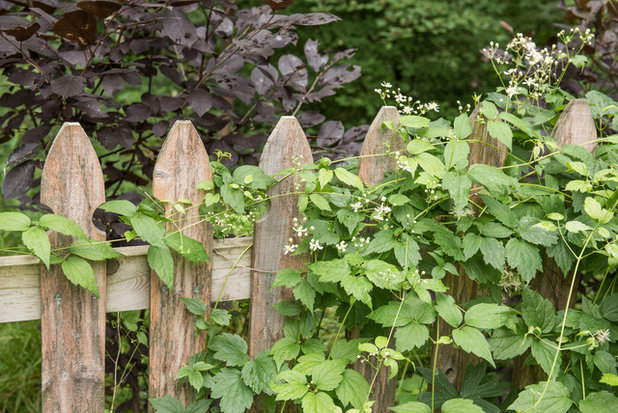
Holm Design & Consulting LLC
Botanical name: Clematis virginianaCommon names: Devil’s darning needles, virgin’s bower, woodbine
Origin: Native to eastern North America, from North Dakota south to Texas, and eastward to Maine in the north and Florida in the south; in Canada, native from Saskatchewan eastward to the Maritime provinces
Where it will grow: Hardy to minus 35 degrees Fahrenheit, or minus 37 degrees Celsius (USDA zones 3b to 9b; find your zone)
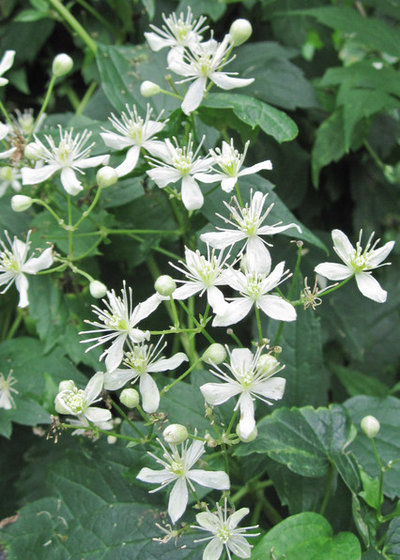
Holm Design & Consulting LLC
Typical plant communities: Woodland understories and openings in partial shade
Soil requirement: Sandy loam to clay loam
Water requirement: Medium
Light requirement: Partial sun
Mature size: 15 to 25 feet tall and 5 to 10 feet wide
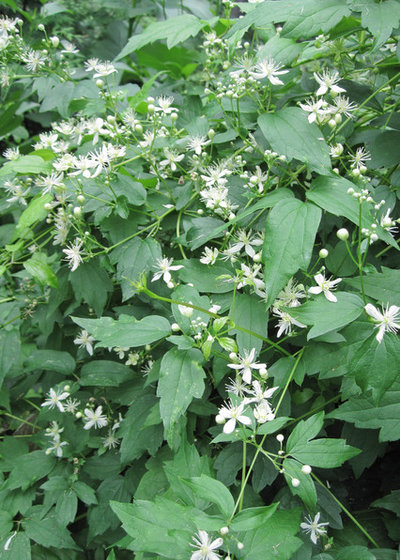
Holm Design & Consulting LLC
Benefits and tolerances: Tolerates a wide variety of soil types and partial sun
Seasonal interest: Clusters of white blooms in mid to late summer, typically in early August; fluffy seed heads in late September through November
When to plant: Spring or fall (potted plants available from most native-plant nurseries in regions where vine grows); if planting in fall, cut back to 10 inches before planting or transplanting; plant near an appropriately sized structure that vine can climb on the following season
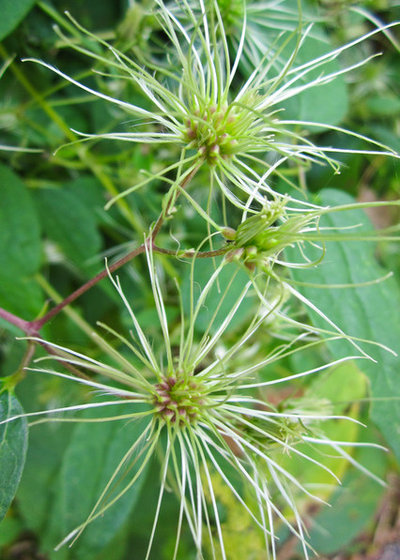
Holm Design & Consulting LLC
Distinguishing traits. Devil’s darning needles
provides interest in late spring once it begins to climb up a trellis or along a fence. Flowers are smaller than cultivated
Clematis species but are numerous and pretty in late summer.
This native
Clematis is similar in appearance to the nonnative and invasive sweet autumn virginsbower (
C. terniflora). Both vines have small white flowers that open in late summer or fall and vigorous growth. However, the leaves of sweet autumn virginsbower are darker and more rounded than those of devil’s darning needles.
How to use it. Unlike many
Clematis cultivars, devil’s darning needles requires a tall trellis or long fence to accommodate its mature size. I stack two 10-foot trellises, one on top of the other, for my vine to climb an exterior wall.
Shown: Seed heads beginning to develop in late September
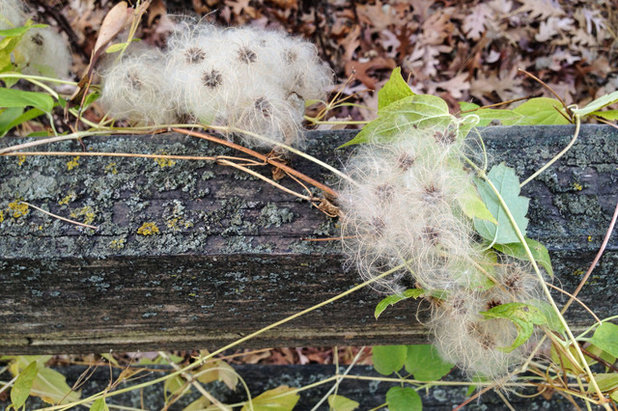
Holm Design & Consulting LLC
Planting notes. Devil’s darning needles needs a structure to grow on, or you’ll constantly be pulling up the vine as it rambles and roots on the ground. You have to check on the growth about once a month (especially if it’s on a fence) to pick up any stems on the ground and weave them into the structure.
Devil’s darning needles needs partial shade. Ideally, grow it vertically along the east side of a building or in a woodland. Don’t plant it where the root system would receive hot afternoon sun, such as on the south or west side of a building.
In the spring, cut the vine about 15 inches from the ground. If desired, remove dried stems from the previous season or leave them in place to act as additional support for the current season’s growth.
Shown: Fluffy seed heads in late October
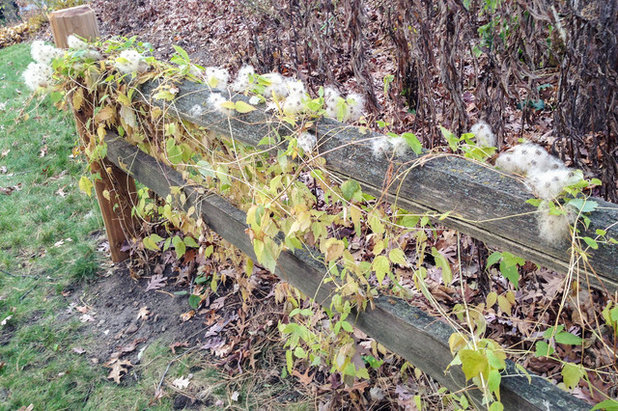
Holm Design & Consulting LLC
Pollinator notes. The vines have separate male and female flowers. Both flower forms attract a number of pollinators, including flies, native bees, and solitary and social wasps.





